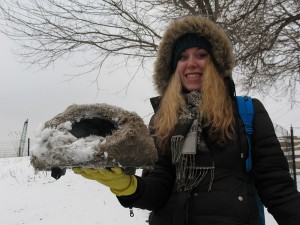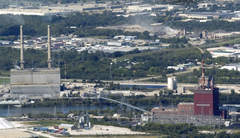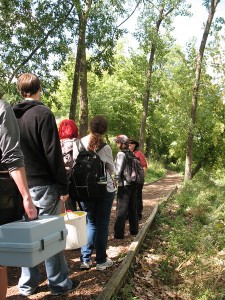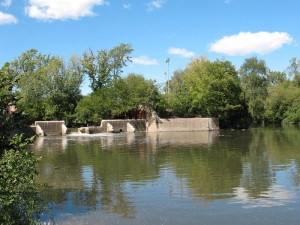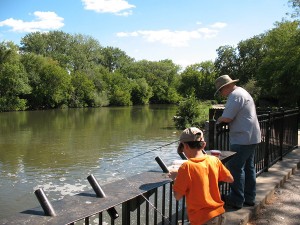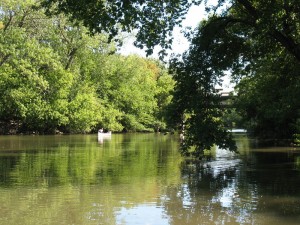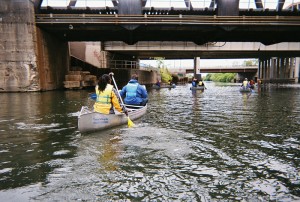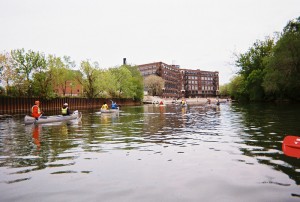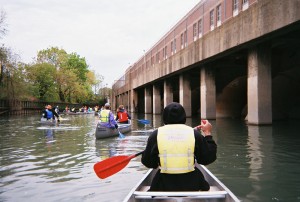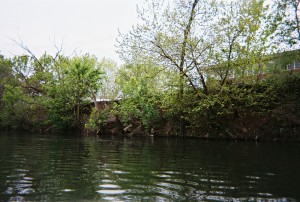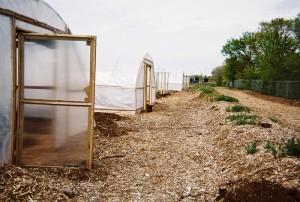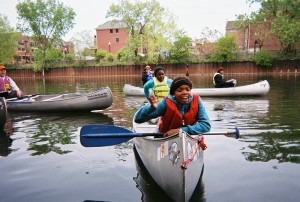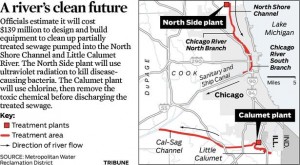Last Saturday, Feb. 23, my SUST 220 Water students (both past and present) joined me at a wonderful annual event here in the Windy City: the Chicago River Student Congress, convened by the environmental conservation organization Friends of the Chicago River. This 2013 celebration of river conservation and environmental education was held at Marie Curie Metro High School on Chicago’s SW Side, and featured yours truly as the “special guest speaker,” a designation that made me proud and humble at the same time, for I still consider myself a student of rather than an expert about the Chicago River.
The Chicago River: Transformed, Exploited, and Abused — but Still Alive
Chicago River Student Congress Special Guest Presentation (pdf version)
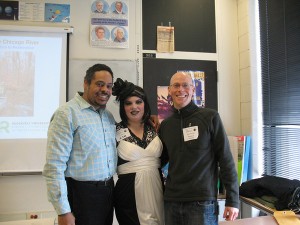
Last year, I co-presented a workshop session on Water and Sustainability with then-SUST major (and now alum) Amanda Zeigler (BPS ’12); you can view a pdf of our slideshow from that 2012 workshop. This successful experience led me to recruit three students from my Fall 2012 Water class at Roosevelt to be fellow participants in this year’s Congress. The fact that my Fall and Spring Water classes this academic year are partnering with Friends of the Chicago River on a “Blueways to Green” environmental education grant made that prospect irresistible.
Former canoeing partners and classmates, Ron Taylor and Ken Schmidt — whose collective nickname “Ebony and Ivory” demonstrates the awesome power of the river to bring together people of all races, creeds, and colors — agreed to co-present a workshop with me entitled “Sustainability and the Chicago River: from Urbanization to Pollution to Restoration,” which we did twice during the course of the Congress (here’s the pdf of our slideshow (8MB file). Ron and Ken skillfully shifted back and forth in their presentation, and were able to elicit lots of dialogue from their audience member, mainly students from CPS high schools who have done environmental conservation and/or science projects on the river.
Meanwhile, roaming the halls of the Congress was fellow SUST major Angi Cornelius, another student from my Fall 2012 Water class, who indulged her theatrical side by dressing up as one of six “Super Villians” who represented ecological/social threats to the biodiversity and water quality of urban rivers. Angi’s character was “Z. Mussel” (the zebra mussel, naturally), an invasive bivalve species that she refashioned into the persona of a Russian femme fatale. Along with her fellow Villians, Angi worked the crowd throughout the morning by engaging students in small group conversations about the impact of invasive species on rivers, streams, and the Great Lakes ecosystem.
Students from my current section of SUST 220 Water met at the Congress for our 4th week of class and our 2nd field session of the semester. The Congress is a unique learning opportunity, as it features a wide variety of speakers and workshops — some by high school teachers and students; some by college profs and students; and a few by conservationists, environmental professionals, etc. — that provide attendees with science-based knowledge about the river’s history, ecology, present status, and future prospects.
For photos of the Congress, check out my annotated slideshow as well as this online album from the Friends of the Chicago River’s Facebook page.
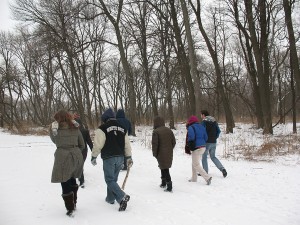
Following the Congress and a quick sack lunch at the high school, during which we bade farewell to Ron, Ken, and Angi, my 220 scholars and I carpooled to a nearby Cook County Forest Preserve location that has profound historical and geographic significance to the city of Chicago, the Chicago and Des Plaines Rivers, and two of the great North American watersheds (those of the Great Lakes and the Mississippi River). This is the Chicago Portage National Historic Site at 4800 S. Harlem Ave. in Lyons, one of only two National Historic Sites in the entire State of Illinois.
If the Metropolitan Water Reclamation District’s Stickney wastewater treatment plant just to the east is a supreme example of how we use technology and the built environment to control water as a resource (and deal with the problem of wastewater), the Chicago Portage is polar opposite kind of experience. Here we see the landscape much as it appeared to the 17th century explorers Louis Joliet and Pierre Marquette, when they crossed Mud Lake (now occupied by the Stickney WTP) between the Des Plaines and Chicago Rivers, thus staking out a trade route between the Great Lakes and the Gulf of Mexico.
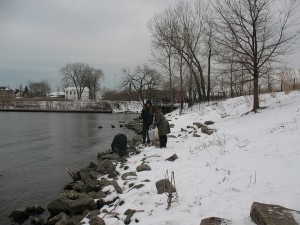
Our last stop of the day was further east on Interstate 55, where we exited north on Ashland Avenue and stopped at Canal Origins Park. This riverside parkland (and fishing spot) provides impressive views of the present-day juncture of the Chicago River’s South Branch and Bubbly Creek, and commemorates the origin of the historic I&M Canal, which was constructed from 1836 to 1848 and fulfilled Joliet’s dream of connecting the Great Lakes with the Mississippi River system. Here, then, is a superb spot to talk about the history, ecology, and geography of the creeks and rivers which run through the city, as well as the industrial and wastewater treatment processes that have polluted these waters over the years.
At Canal Origins, we engaged in some good old-fashioned service learning, Roosevelt-style, by donning work gloves and picking up any litter/recyclables we came across. A recent blanket of snow concealed most of the litter in the upper part of the park, along the busy street. But down at the river line at the South Turning basin, where Bubbly Creek enters into the South Branch, lots of garbage and urban detritus presented itself for our labors.
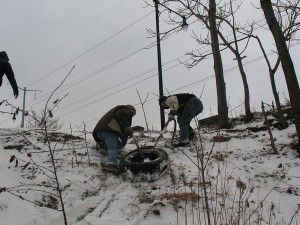
My students hurled themselves into this effort with purpose and enthusiasm, not the least impressive for coming at the end of a rather long day to that point. All manner of intriguing (and sometime revolting) artifacts were retrieved, from beer cans to paper cups to plastic bags to old clothes and towels to large pieces of ships’ rope to automobile tires to tampons to (most bizarre) fur-covered rat traps with wheels.
Here’s an annotated slideshow of photos from the day of our visit to Chicago Portage and Canal Origins.
After heroically hauling a heavy, ice-filled tire out of the river and up a steep slope, using one of the old ships’ ropes as a winch line, Conor and Chris suggested that the SUST program at RU should adopt the Canal Origins Shoreline as a parkland, and clean up litter there on a regular basis.
Doesn’t sound like a bad idea to me.
